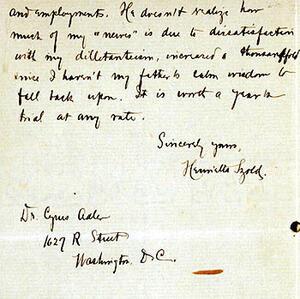Tackling Text
Text-heavy primary sources like newspaper articles, speeches, government documents and the like can be difficult for younger students or for individuals who struggle with the mechanics of reading and reading comprehension. There are several things teachers can do to make texts more tangible or accessible for learners in these situations. We have included a few ideas, we’d love to hear anything you have to add. Email JWA’s Education Staff with suggestions and ideas for making text-based learning easy and accessible.
Less is more
As an adult, especially if you are inclined to studying history, it is easy to select too many texts or ideas at once. Always ask yourself which documents are most important or will be most interesting and prioritize their study. If you have time for other pieces—great! If the first one takes 30 minutes and that is all you have time for, then it’s a good start, and you’ll have a better idea of how to prepare for the next class.
Excerpt, excerpt, excerpt!
One of the most daunting challenges of reading and analyzing a text is length. When someone hands you a chunk of text that feels too long, and then puts a time limit on your work time, it can be very stressful. Instead, read through the texts carefully yourself, and choose one to three paragraphs that demonstrate the main point you want to get across. Provide context by writing a short intro yourself, by explaining it, or by showing a short video clip. Then, give the students time to read the excerpt and ask questions to make sure they understand the big picture represented by the whole document, as well as the specific point addressed in the excerpts you chose.
This presentation and accompanying online learning program can help you learn more about adapting and scaffolding texts for younger or lower-level readers.
Go “old school”
For hundreds of years Jewish people have been studying text in chevruta. Just because a text isn’t from the Talmud doesn’t mean you can’t apply the same method of study to it. Think strategically about pairing your students into partnerships that are complementary, both in skill and personality (strong reader with a weaker reader, shyer students together, etc.). Then, help your students hone the practice of going through the text line-by-line, summarizing what they think it says, and asking one another questions to look at the text more deeply. For this method, you may choose to focus on less texts so that each group is looking at one longer text instead of two or three shorter ones.
Text 2.0
There are many great ways to bring text study into the 21st century. You could record yourself or another adult dramatically reading the text (a speech or otherwise) and then play it back for students to listen to as they read along. You could pause in between paragraphs or sections to ask questions and help refocus the listening. You could also use Twitter or a similar messaging service to post real-time commentary on the text. Students could tweet from their own handles, or you could create a class account and have students tweet to it from a class computer. Students could also write tweets and have a designated typist entering them in. Display all of the messages on a projector or smart board and you can follow students’ commentary and answer questions as you read the texts together as a class.
Be dramatic
Speeches and letters provide great opportunities to reenact a moment in time. Dress up in character as the author of the primary source (or have a parent or teaching assistant do so) and perform the speech or letter. Provide students with a print copy to follow along. Alternately, you could break the speech up into parts and have students take turns reading their piece aloud from a lectern or podium equipped with a fake (or real) microphone.
Diversify
When you are studying text-heavy documents, pair them with photos, audio, or video. Students access and interpret these “texts” differently than word-based primary sources and it will give them a break. If you are savvy about it, the photos or videos you add will relate to the documents students are reading and can deepen their analysis of the written texts with context and questions.




